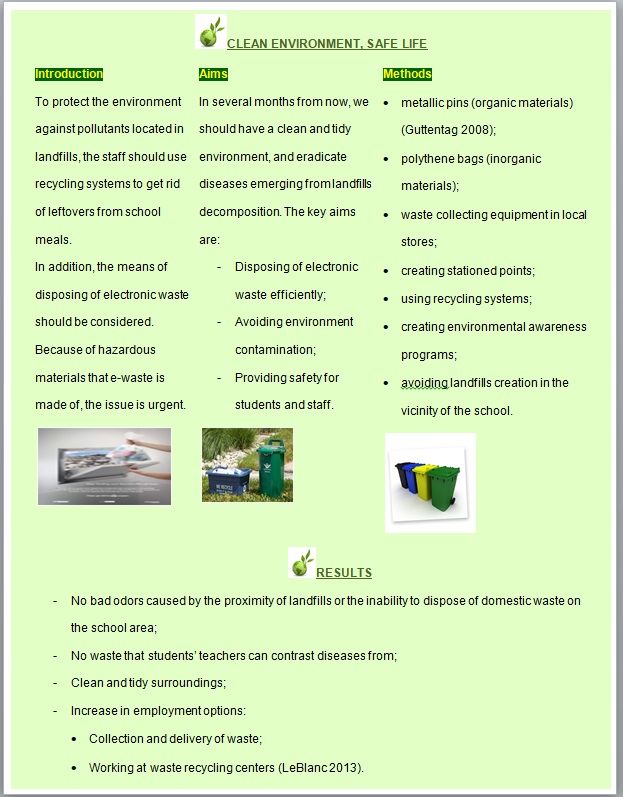Managing electronic waste is one of those tasks of the XXI century that appeared with the advent of technological advances and might seem easy at first, yet, at a second glance, pose a number of difficulties to the users of modern technology. Much like industries and households, schools produce impressive amounts of waste as a result of the use of computers (the utilization of used video adapters, etc.), printers and photocopying machines (empty cartridges), and practically any device that requires a power source (used up batteries). Therefore, it is crucial that a school must choose a particular means to get rid of electronic waste as harmlessly for the environment as possible (DEP 2008).
In the light of the fact that resources exhaustion seems to be turning into a major issue in the XXI century, it is most reasonable to suggest recycling as the most efficient means of e-waste management. By recycling electronic waste, the school will be able to accomplish three key tasks, which are 1) abstaining from environmental pollution; 2) a reasonable approach towards the use of exhaustible resources; 3) using financial resources reasonably (WPCS 2013).
In addition to being financially reasonable and environmentally friendly, the given means of e-waste disposal will also help keep the students and teachers safe, since some of the elements of e-waste, such as lead and mercury, are harmful to people’s health. Being removed from the school property, these elements will not pose a threat to people’s health anymore and the goals will be met.

References
DEP, 2008, Summary of e-waste laws in the U.S: campaign for recycling, Web.
Guttentag, R M 2008, Recycling organic wastes: organic materials, Web.
LeBlanc, R 2013, Introduction to organic recycling: organic wastes, Web.
NRDC 2011, What to do about e-wastes, Web.
WPCS 2013, How to recycle other materials: computer equipments and electronics, Web.